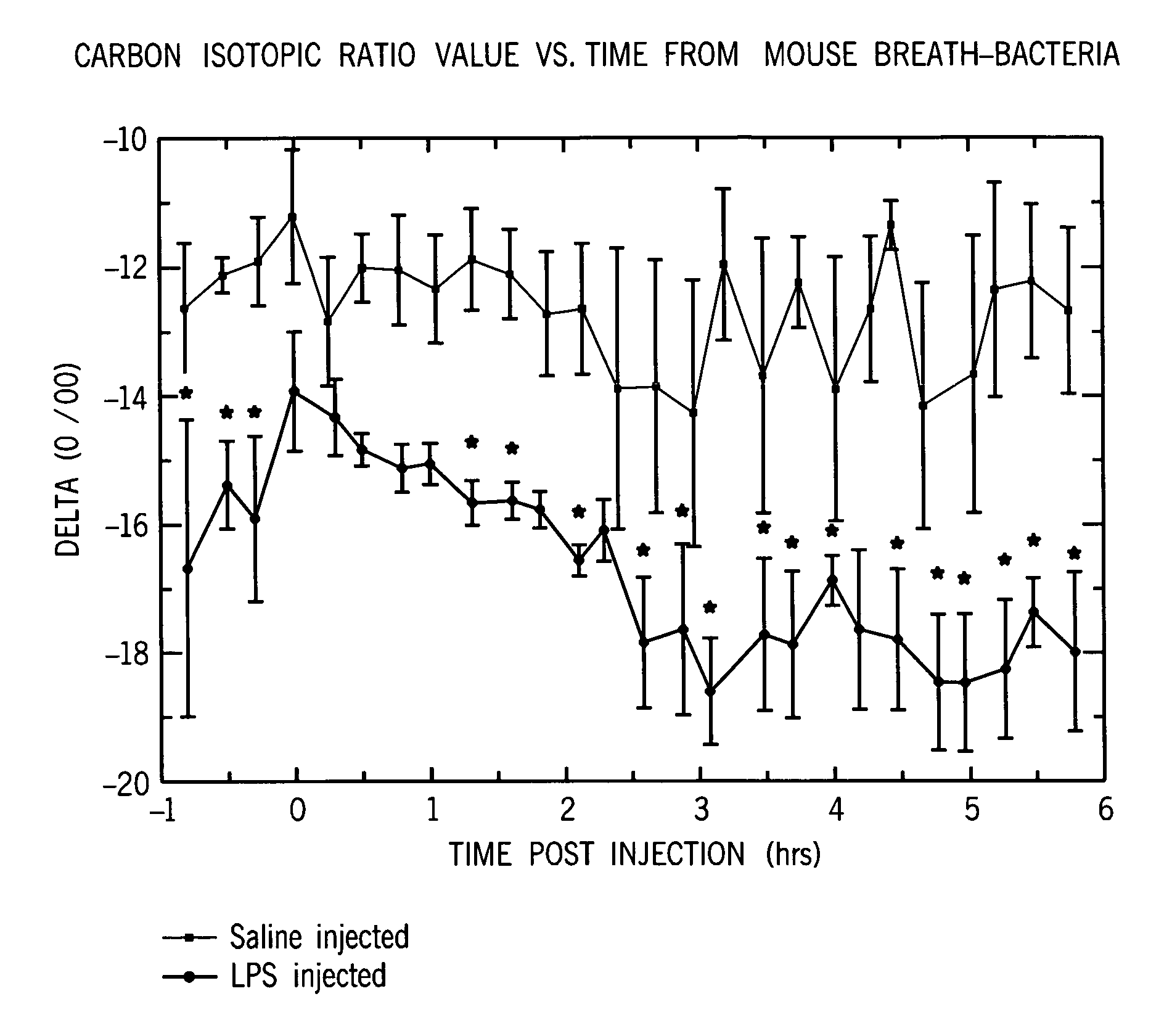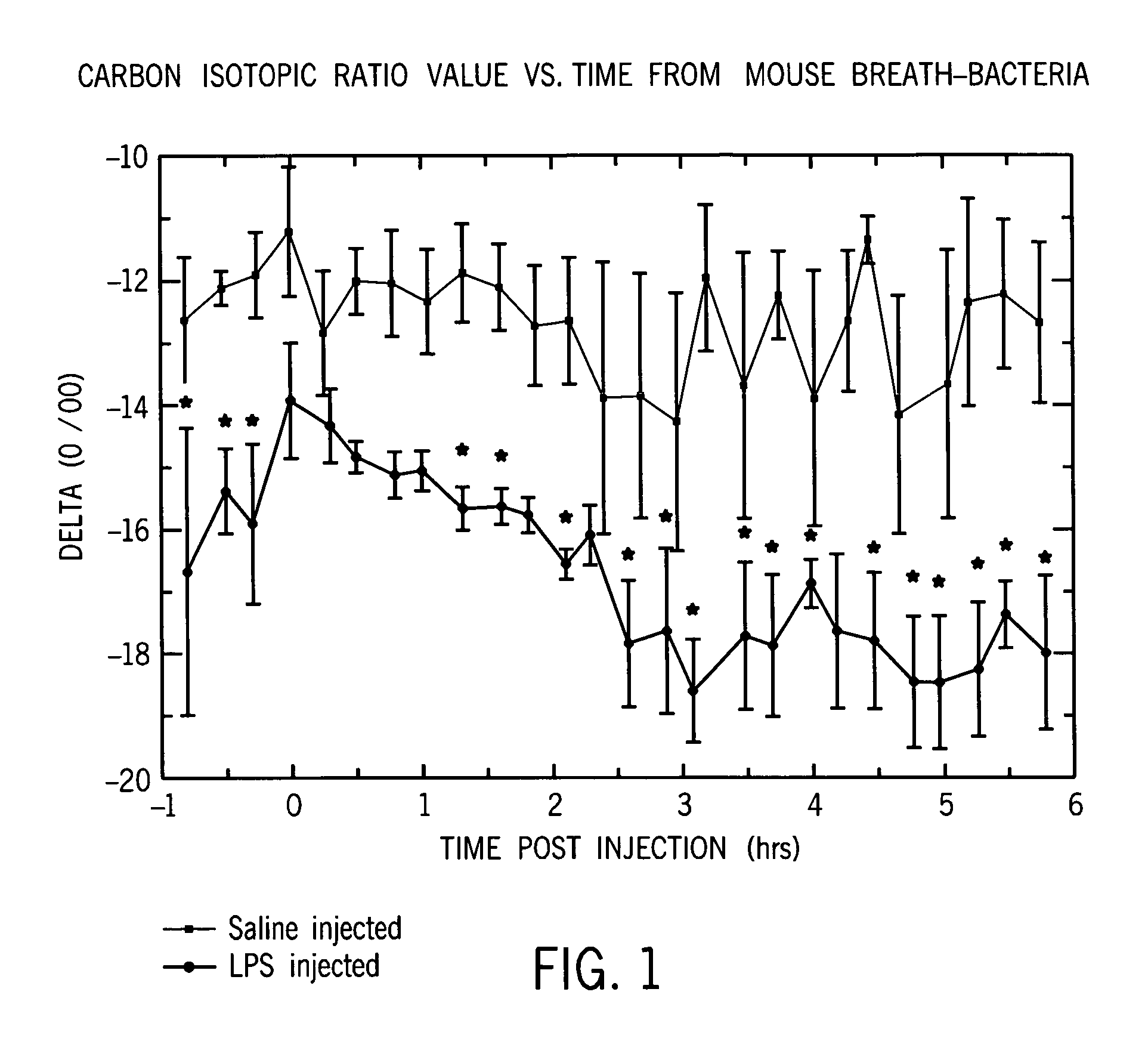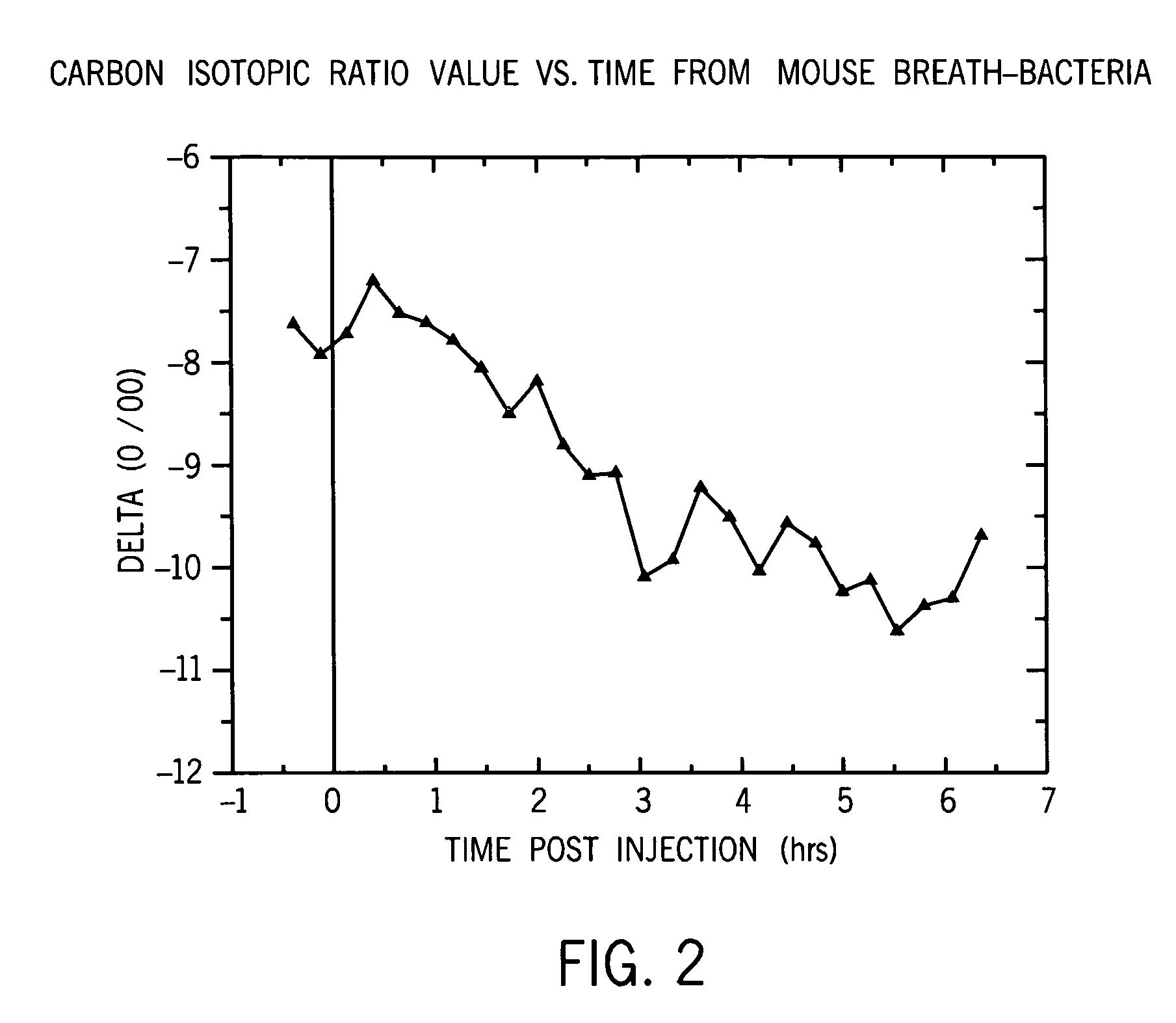Identification of disease characteristics using isotope ratios in breath
a technology of isotope ratio and disease characteristic, which is applied in the field of noninvasive methods, can solve the problems of unnecessarily incurred drug cost, unnecessary use of sophisticated laboratory equipment, and patient exposure to the inherent side effects of ineffective drugs, and achieves the effects of convenient use, high accuracy, and relatively inexpensiv
- Summary
- Abstract
- Description
- Claims
- Application Information
AI Technical Summary
Benefits of technology
Problems solved by technology
Method used
Image
Examples
example 1
[0057]FIG. 1 illustrates the time course for delta values for a healthy mammal versus one that was given a bacterial cell wall component (LPS) as an immune stimulus. The data illustrates that the carbon isotope ratios presented as delta values becomes more negative significantly below controls within about two hours of the time the LPS immune stimulus entered the organism. We would expect similar results for other isotope pairs.
[0058] At time zero mice (n=5 per group) were injected i.p. with either bacterial cell walls (LPS at 1 mg / kg body weight) or sterile saline (vehicle), and placed in a metabolic chamber. Continuous airflow through the chamber was sampled approximately every 15 minutes by a cavity ring-down spectrometer (CRDS) and the isotopic ratio of 13C / 12C (delta) was measured. Results were analyzed using SAS proc mixed accounting for autocorrelation of repeated measures. Stars represent statistically significant differences between treatments at a given time-point with p<...
example 2
[0059]FIG. 2 shows that the bacterial cell wall immune stimulus response is similar between the Example 1 mice experiments and the Example 2 chickens. It confirms that a chicken given the same kind of bacterial cell wall injection also has a significant negative change in breath stable isotope delta values within two hours of the administration of the bacterial cell wall immune stimulus. The chickens serve as their own control with the normal pre-injection stable isotope breath variation between approximately −7 and −9 delta.
example 3
[0060]FIG. 3 shows that the isotope ratio response to a viral infection is much slower than to a bacterial infection, and it has different, and distinguishing, characteristics. It takes well over a day (e.g. often about 80 hours) for the first appreciable viral response in the isotope ratio to occur. This is contrasted with the much quicker isotope ratio response (e.g. about 2 hours) for bacteria.
[0061] In this experiment food was initially withheld to make the chick hungry and thirsty. A viral agent was administered in drinking water. After the chick had consumed the water with the viral agent, food was restored and the experiment continued. Approximately 80 hours into the experiment the first significant decline in delta values occurred. A partial recovery period then ensued. A sudden more negative result and recovery pattern was then periodically repeated.
PUM
 Login to View More
Login to View More Abstract
Description
Claims
Application Information
 Login to View More
Login to View More - R&D
- Intellectual Property
- Life Sciences
- Materials
- Tech Scout
- Unparalleled Data Quality
- Higher Quality Content
- 60% Fewer Hallucinations
Browse by: Latest US Patents, China's latest patents, Technical Efficacy Thesaurus, Application Domain, Technology Topic, Popular Technical Reports.
© 2025 PatSnap. All rights reserved.Legal|Privacy policy|Modern Slavery Act Transparency Statement|Sitemap|About US| Contact US: help@patsnap.com



